Witch Hazel Tree
- June 9, 2023
- 0 comment

Common Name, Botanical Name and Origin Name
The world of horticulture is rich and varied, offering a plant for every preference. Among these, one stands out for its peculiar characteristics and year-round charm: the Witch hazel. Known to botanists as Hamamelis, The name Witch hazel is believed to have been derived from the Old English “wice,” meaning pliant or bendable, indicative of the plant’s branches.
Interesting Facts

Witch hazel is an enigma in the botanical world, presenting a fascinating twist in the traditional plant life cycle. A deciduous shrub or small tree, Witch hazel stands as one of the few species that refuse to follow the norm of blossoming in spring or summer, instead opting to brighten the garden canvas with its vibrant yellow flowers during the typically gloomy period of late winter or early spring. This radiant flowering serves as a signal of hope, a beautiful testament to life’s resilience against the biting frost. But its charm doesn’t end with its unseasonable flowering. Witch hazel harbors a unique and dramatic method of propagation: it “shoots” its seeds like little botanical bullets, propelling them several meters away from the parent plant. This ingenious strategy not only aids in broadening its distribution but also lends an air of spectacle, serving as a nature’s firework display right in the backyard. From its timing of bloom to its seed dispersal mechanism, every aspect of Witch Hazel is a demonstration of its distinct individuality in the plant kingdom.
Family and Plant Type
Witch hazel belongs to the Hamamelidaceae family. It is a deciduous shrub, known for its spectacular late winter to early spring bloom, and a notable display of fall colors.
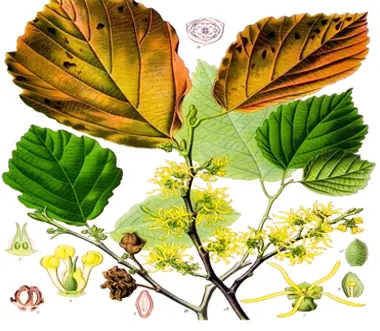

Hardiness Zones
Witch hazels are hardy plants. Depending on the specific variety, they usually thrive in USDA hardiness zones 3 through 8.
Mature Size and Growth Rate
Witch hazels, when mature, can reach a height and spread of 10-20 feet, often assuming an appealing vase shape that provides an architectural element in the landscape design. The Witch hazel has a moderate growth rate. You can expect it to grow around 12 to 24 inches per year, gradually reaching its mature size.


Soil and Sun Preference
Witch hazels are adaptable and can thrive in a variety of conditions. They prefer well-drained, loamy soil, and while they can withstand full sun, they also do well in partially shaded areas.
Fun Facts
Did you know Witch hazel extract is a primary ingredient in many skincare products, particularly toners, thanks to its anti-inflammatory and astringent properties?

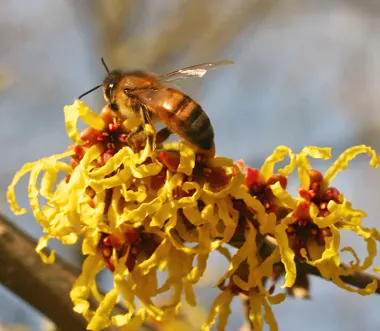
Wildlife Value
Witch hazel offers considerable value to wildlife. Bees and other insects are attracted to its nectar, while birds often feast on its seeds.
Attributes
This plant is not only visually appealing but also produces a spicy fragrance that’s particularly noticeable on warm, late-winter days. Its flowers, typically yellow to red, are characterized by slender, ribbon-like petals.


Common Pests & Diseases
Witch hazels can occasionally be affected by pests such as aphids and gall aphids, and diseases like leaf spots and powdery mildew.
Pruning and Propagating
Pruning Witch hazel is best done in spring, immediately after flowering. Propagation is typically achieved through softwood cuttings or seeds, though the latter requires stratification and patience.
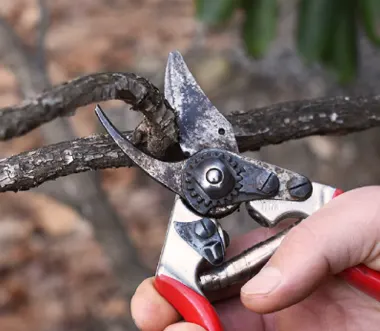
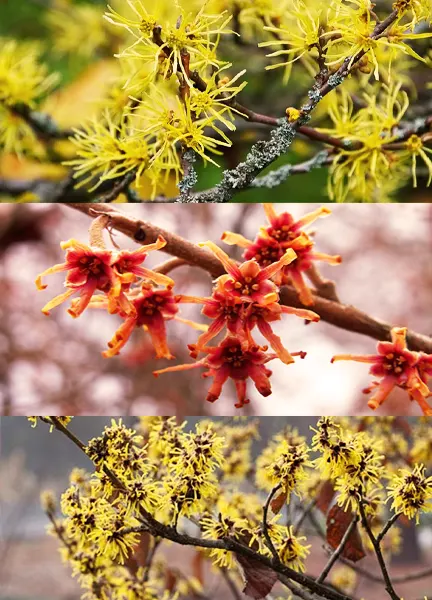
Varieties
Numerous varieties of Witch hazel exist, including Hamamelis virginiana, Hamamelis vernalis, and Hamamelis mollis, each with slightly different characteristics and care needs.
Habitat Requirements
Originally, Witch hazels were found in woodland habitats, indicating their preference for a spot that mimics these conditions — partial shade, rich, well-draining soil.


Benefits and Disadvantage
Besides its ornamental value, Witch hazel has medicinal uses, with extracts from the plant often used in skin care for their astringent properties. However, their seed dispersal mechanism could lead to unexpected seedlings in the garden.
Care
Taking care of a Witch hazel primarily involves regular watering, occasional pruning for shape, and a watchful eye for any signs of disease.


Soil Preference
Witch hazels prefer soil that is moist but well-drained. They can tolerate a range of soil pH, from mildly acidic to mildly alkaline.
Frequently Asked Questions:
- Why does Witchhazel bloom in winter?
- Witchhazel has adapted to bloom in late winter or early spring to avoid competition with other flowering plants. This strategy ensures it gets all the attention from the limited winter-active pollinators, optimizing its chances of successful pollination.
- How does Witchhazel “shoot” its seeds?
- Witchhazel’s unique seed dispersal mechanism is a result of evolutionary adaptation. When the fruit ripens, the pressure inside it builds up to a point where it “explodes” and ejects the seeds several meters away. This strategy aids in spreading the plant’s offspring over a broad area, enhancing its chances of survival and propagation.
- What is the medicinal use of Witchhazel?
- Extracts from the bark and leaves of Witchhazel have long been used in traditional medicine. They are known to have anti-inflammatory and astringent properties, and are commonly used topically for skin conditions like acne, eczema, and psoriasis. It is also used in over-the-counter remedies for hemorrhoids.
- Can Witchhazel thrive in any soil type?
- Witchhazel prefers well-drained, loamy soil, but it can adapt to a variety of soil conditions. However, it does not do well in extremely dry or waterlogged soils.
- How big can a Witchhazel plant get?
- Depending on the variety, Witchhazel can grow anywhere from 10 to 20 feet in height, often with a similar spread. This makes it suitable for use as a small tree or a large shrub in landscape design.
- Why are the leaves of my Witchhazel turning yellow?
- If it’s not autumn (when leaf yellowing is natural), then your Witchhazel might be signaling stress, which could be due to over-watering, under-watering, or a nutrient deficiency. It’s important to ensure it gets appropriate care for its specific needs.




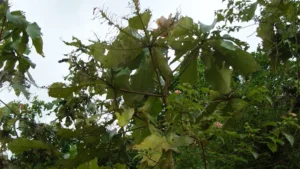
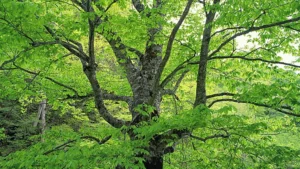
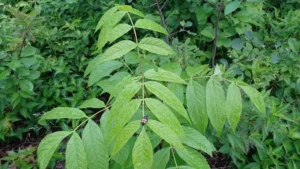

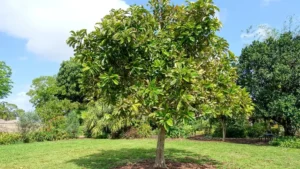
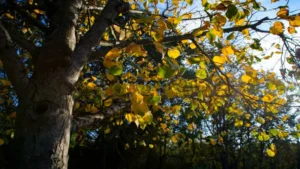


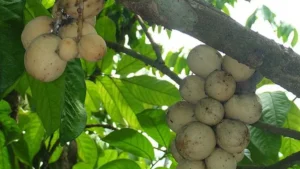

Leave your comment